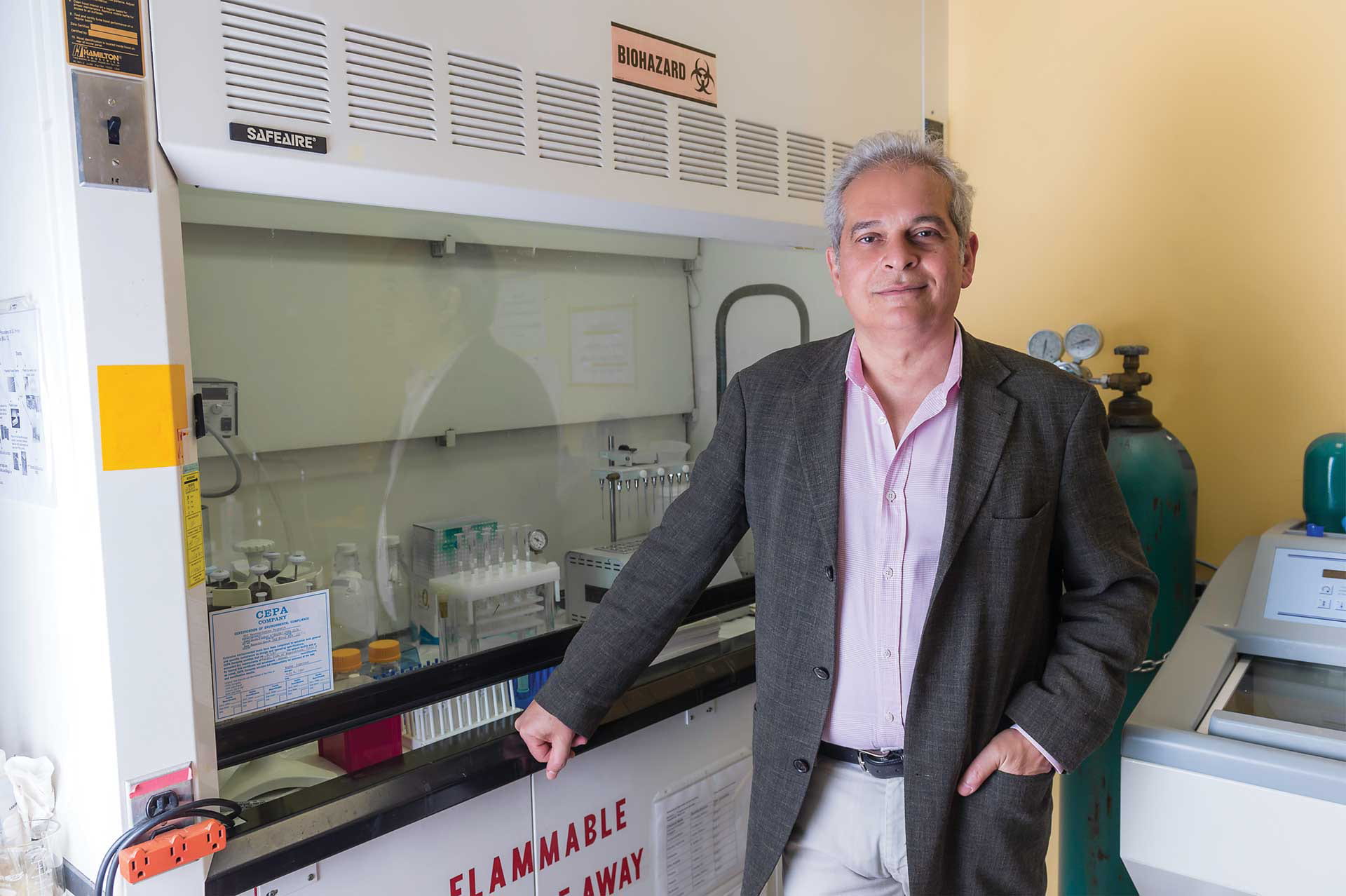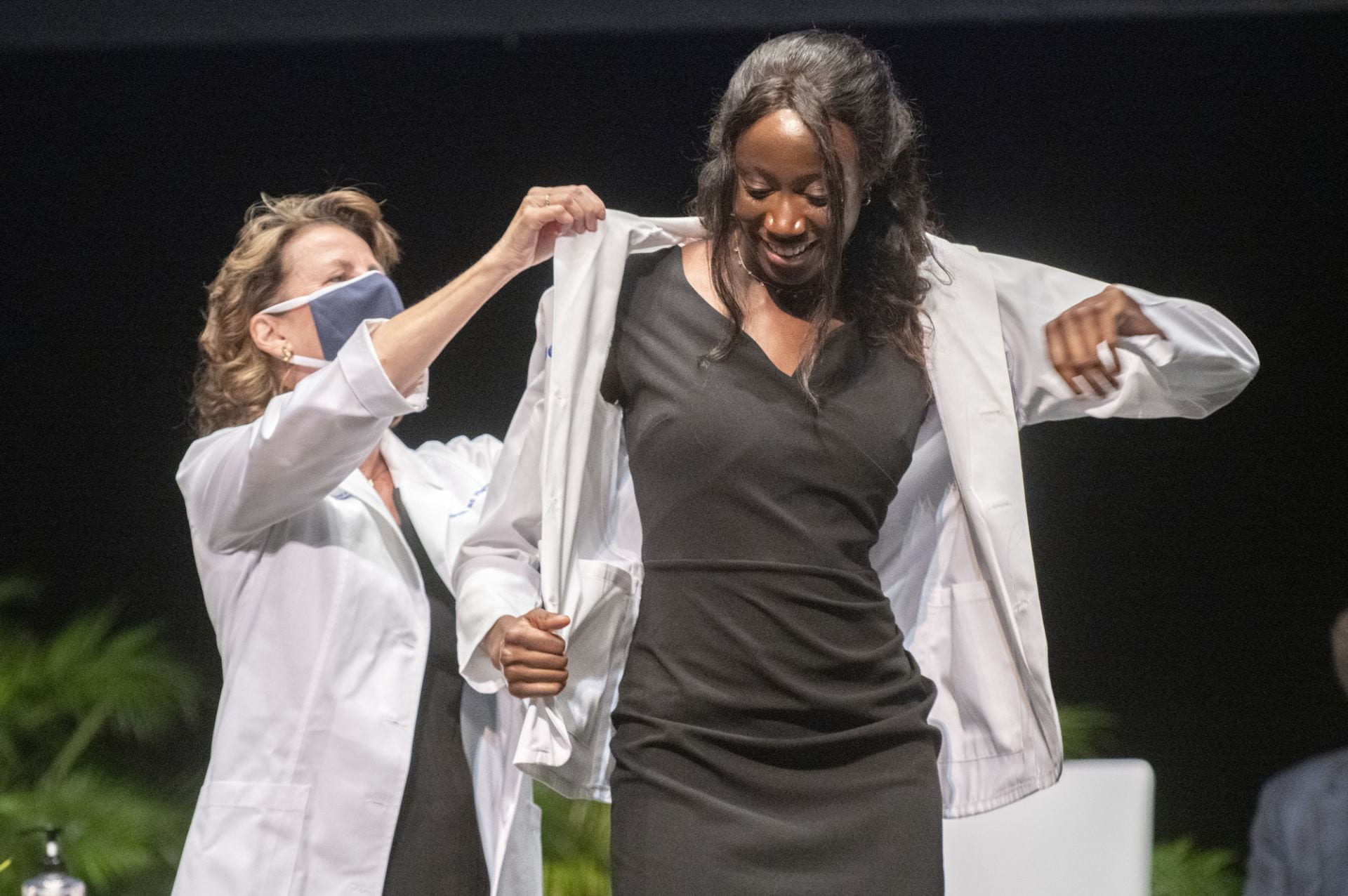Shaking up the shark's image
UCI Ph.D. candidate makes headlines with discovery of ‘vegetarian’ species of the feared carnivores

She’s never seen “Jaws” or heard “Mack the Knife,” but don’t underestimate Samantha Leigh’s shark credentials. She knows how to hypnotize the creatures, analyze their blood and even take them on a two-hour car trip.
Last month, the UCI ecology & evolutionary biology Ph.D. candidate made international headlines for discovering the world’s first “vegetarian” shark, a bonnethead that swims along the coast of Florida and chomps on seagrass.
“I hope this study helps change the public’s perception of sharks,” Leigh says. “They’re usually viewed as mindless meat eaters, but there are hundreds of different species, and very few have had negative encounters with humans.”
Leigh, whose UCI lab space and home are littered with shark-themed toys, jewelry, bobbleheads and other knickknacks, traces her fascination with the toothy beasts to elementary school. “In third grade, we had to do a project on an animal, and I chose the shark,” she says.
More recently, the Baltimore native built a walk-through model of the ocean denizen’s digestive tract, which she displayed at Crystal Cove State Park’s annual art festival. The installation, designed with Anteater M.F.A. student Lauryn Moles, was based on Leigh’s groundbreaking research in the Florida Keys, home to miles of seagrass meadows and thousands of small sharks.
Three years ago, bankrolled by grants from the National Geographic Society and other institutions, she found herself snorkeling alongside a 100-foot gill net that she had set up off the Sunshine State coast, wrangling bonnetheads. The secret to capturing the 3-foot fish peacefully, Leigh says, is to flip it upside-down. “They kind of go into a trance-relaxed state,” she says.
After corralling nine test subjects and returning to shore, Leigh and her team had to drive the animals to a lab two hours away. How do you transport a shark by land? The same way you take a goldfish home from the pet store, she says: in a plastic bag. “I bought these huge, thick, industrial-size bags,” Leigh explains. “Right before you p

ut the shark in, you pump tons of oxygen into the water and the bubbled air space, then place everything in a foam cooler.”
Once the creatures were settled in at their new residence – a saltwater tank at Florida International University – Leigh began her experiment. Teaming with Yannis Papastamatiou, an assistant professor of biological sciences at the school, and nutritional physiologist Donovan German, UCI associate professor of ecology & evolutionary biology, she put the bonnetheads on a diet that was 90 percent seagrass and 10 percent squid.
For years, scientists have known that coastal sharks vacuum up seagrass but presumed that their real target was a species of blue crab that lives in the plants. Leigh, however, wondered if the bonnetheads were part vegetarian. “They were consuming more seagrass than we’d ever seen any shark or carnivore eat,” she notes. “I was curious if they could actually digest and absorb nutrients from it.”
Sure enough, when Leigh and her colleagues analyzed the blood and feces of their underwater guinea pigs, they realized they’d found the world’s first known omnivorous shark.
The discovery will likely alter conservation models for seagrass meadow ecosystems in the Atlantic Ocean and Gulf of Mexico, says German, who runs the UCI lab that oversaw Leigh’s project. It shows that bonnetheads “play a crucial middleman role in those habitats, which are nurseries for many important species,” he adds. One practical result might be redesigning commercial fishing nets to avoid entangling so many of the sharks, he notes.
In July, just hours after submitting the findings to a scientific journal, Leigh gave birth to another labor of love: her daughter, Reighlyn. Already, the infant appears to be taking after her mom. Says Leigh: “I’m pretty sure she has more shark-themed clothes than anyone in the world.”


